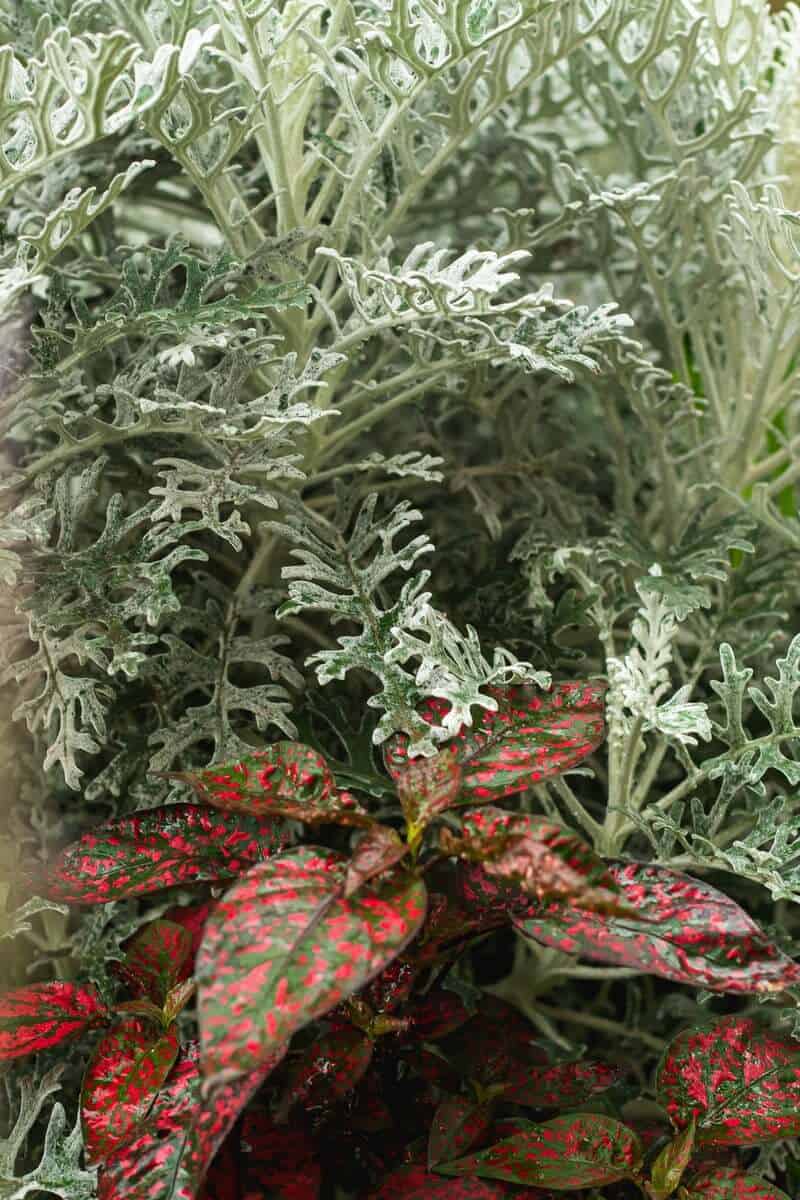Last Updated on January 9, 2023 by a Friendly Gardener
If you are looking for a colorful addition to your home garden, you may have found it with the Polka Dot plant. The herbaceous perennial Hypoestes Phyllostachya is better known and referred to as the Polka Dot plant! It is a native of Madagascar and a member of the Acanthaceae family.
The Polka Dot boasts brightly spotted foliage that contrasts beautifully with the green foliage so typical of other houseplants. The popular version most commonly available for sale in nurseries will feature pink foliage with vivid green spots. However, this delightful plant can also be found with red, white, or purple spots or markings. Some growers have created cultivars with stronger coloring and deeper hues.
The Polka Dot is an easy houseplant to care for. They are plants for warm climates and are often treated as annuals outdoors only to be replaced the following year. As houseplants, they remain smallish. Plant yours in the spring. Their growth rate is rapid. Other popular names include the pink dot plant, the measles plant, the freckle face plant, and the flamingo plant.
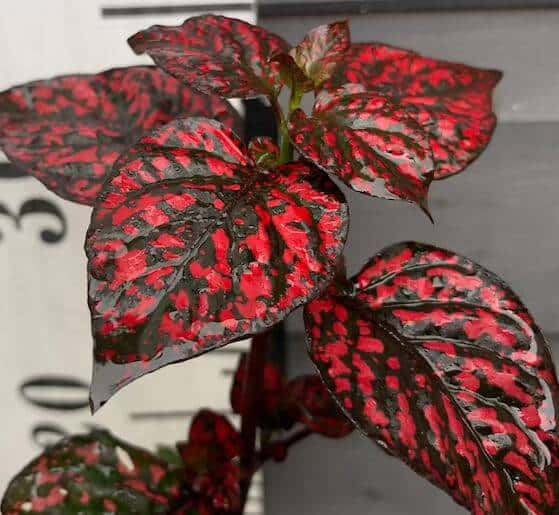
Warm temperatures with generous humidity make for a happy plant.
Polka Dots cultivated outdoors require regular watering unless your area has good rainfall. They need fertilizing during the growing season beginning in spring through autumn. The Polka Dot is non-invasive and does well in garden beds with various shrubs and flowers.
They can become leggy during growth, so trim the top two leaves on stems weekly. You’ll achieve a much fuller, bushier plant. Sometimes the Polka Dot will develop lilac blooms that sit on spikes. This usually happens in the summer. These flower spikes are not particularly showy and can be pruned to prevent energy drain.
In its native Madagascar, this plant will grow to three feet high and wide. Houseplants remain smaller. With age the plant becomes woody.
Polka Dot Plant Care
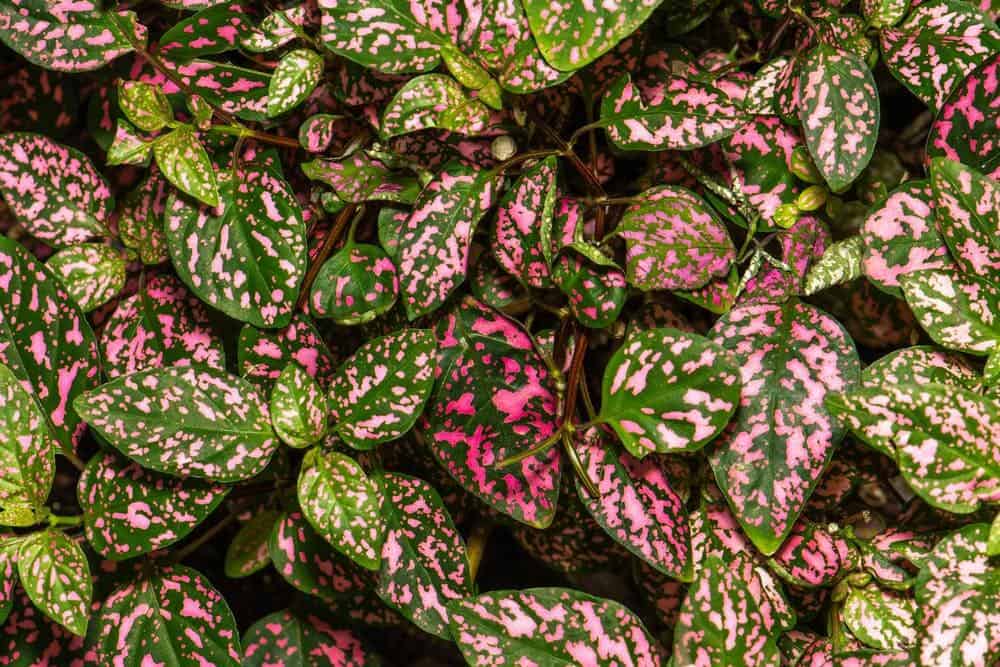
Soil
Loamy soil that is organically rich is best for your Polka Dot, and it must be well-draining. Add a bit of pumice or perlite to a quality all-purpose potting mix to guarantee that your plant drains properly. Ideally, the soil pH should measure between 5.6 and 6.5.
Light
Outdoor Polka Dot plants need a location with partial shade. If the sunlight is too bright, the colorful leaves will fade. Indoors, the Polka Dot prefers a place with lots of bright but indirect light. They adapt to low light conditions but can lose some leaf variegation.
Water
The Polka Dot’s soil bed should be moderately moist always. Do not allow your plant’s soil medium to dry out. If moisture is low, leaves will wilt. However, the soil should not be soggy. Water-logged soil will put your plant at risk for root rot and this is often fatal.
When the soil dries a half-inch deep, give your plant a drink. Indoor plants require more frequent watering than those outdoors. Reduce the watering in the wintertime and increase it again in the spring.
Humidity
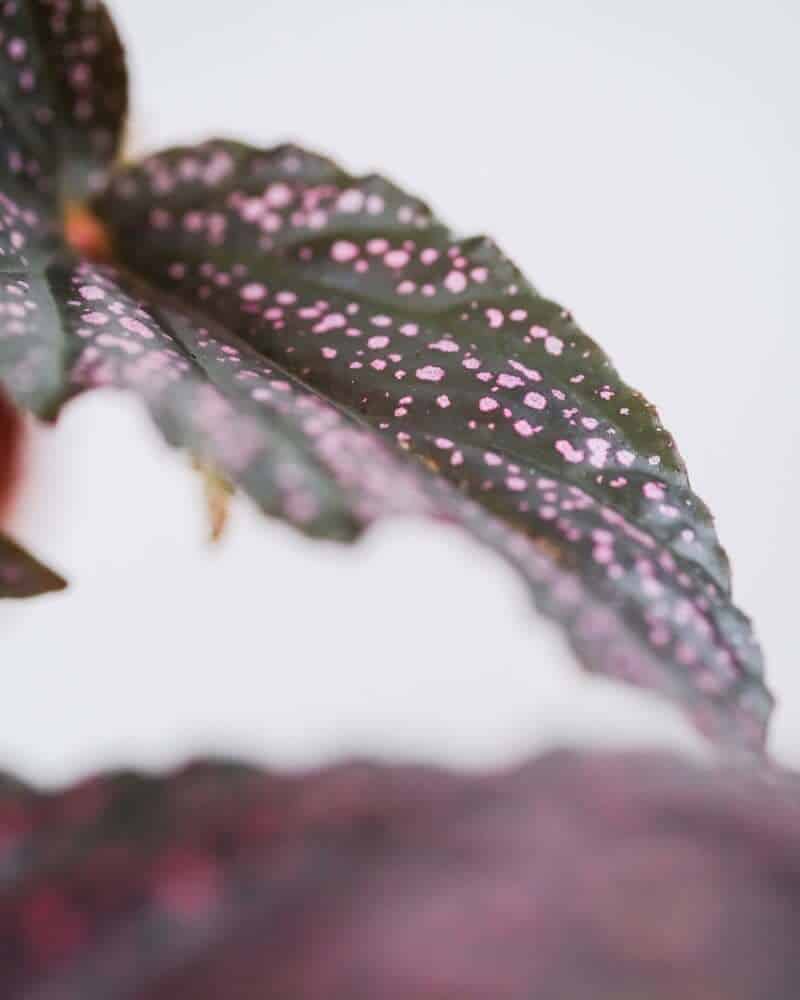
The Polka Dot plant loves humidity! Indoor humidity should dip no lower than 50%. If your home or office does not provide sufficient humidity, use a space humidifier, or a pebble and water tray. Set the plant above the water line on top of the tray. The tray aids in creating a microclimate with higher humidity as the water in it evaporates.
An alternative is to fill a receptacle with water and position it somewhere near the plant. Other aids include misting or grouping plants together to create a natural cap of localized humidity.
Increase humidity with a spray bottle and mist your plant with water. Rainwater is best because it does not chemicals or lime as your municipal water may. Misting water should be tepid. Also, consider cultivating your Polka Dot plant in the bathroom where it will be a colorful and lively addition to bath décor.
Temperature
Outdoor Polka Dot plants like temperatures from 70° to 80°Fahrenheit. Plant them in the spring once the final frost for your area has come and gone. If you hope to overwinter, move them indoors before the first frost.
Indoor Polka Dot plants need to be kept away from heating vents, radiators, and air conditioning vents. For heated flooring, plants need to be raised up on a table or plant stand. Place them away from doorways and hallways where drafts are common, and humidity is lower.
Feeding
Polka Dot plants like feeding, so do so monthly using an organic fertilizer when raised indoors. Outdoors, work several inches of compost into the garden soil bed.
Pruning
Polka Dots plants tend to grow leggy as they age. Prune canes back to a significantly shorter height. The plant will expand laterally creating a much bushier appearance. Pinch off weekly the top two leaves on stems to discourage your plant from growing in height as this will allow it to thin out.
Repotting
You can repot older mature Polka Dot plants in the spring or summer once they have outgrown their current containers.
Overwintering
For outdoor gardeners of the Polka Dot plant, if you live in an area with cold winters. treat them as annuals. Place them in containers and move them inside in the fall. They will not survive temperatures below 60°F.
Polka Dot Plant Propagation
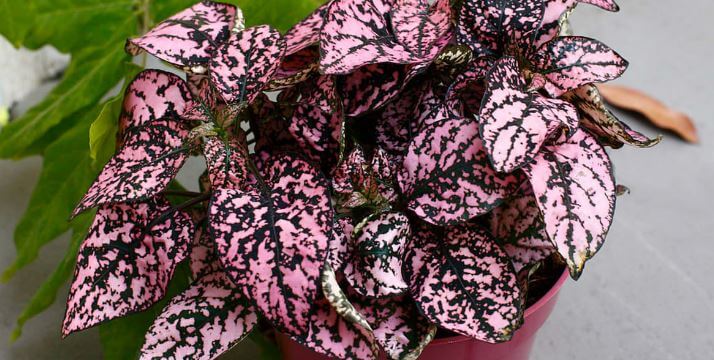
To propagate a Polka Dot plant, choose either seeds or stem cuttings. If seeding these plants, sow them in early spring. Place them in a soil bed that is both warm and moist. After a few days germination should begin. New Polka Dot seedlings should be ready for transplant into your outdoor garden bed in a few weeks.
Propagation with cuttings requires snipping off a stem length in the vicinity of a leaf node. Cut a five-inch section from the mother plant. Remove all foliage at the cut end. Dip the cut end with rooting hormone and put it directly into warm and moist soil. In a week the roots should begin to sprout.
Polka Dot Plant Toxicity
The ASPCA-American Society for the Prevention of Cruelty to Animals (ASPCA), states that the Polk Dot is a non-toxic plant for horses, dogs, and cats. If chewed and swallowed, it can cause an upset stomach with vomiting and possibly diarrhea. This plant is resistant to deer for those cultivating it outside.
Pests, Diseases, and Problems
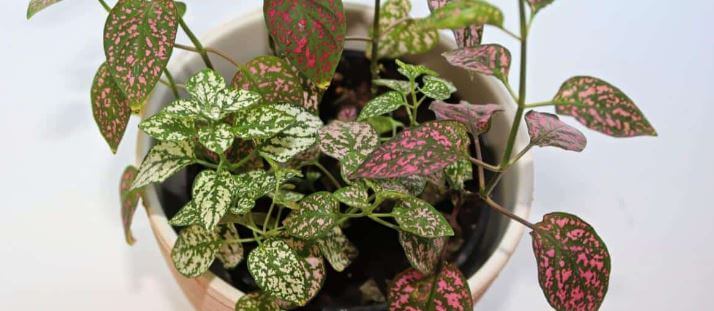
The Polka Dot is susceptible to aphids, scale, mealybugs, whiteflies, and spider mites. Leaves will discolor and feature holes, or you may see bugs moving on the plant. Spider mites leave small webbing between the leaves and stems.
Use organic pesticides like Neem oil for houseplant pest infestations. When applying Neem oil, move the plant outside and spray it to avoid vapors. Polka Dots cultivated indoors in less-than-ideal conditions are more at risk for pest infestations than those grown outside in the proper environmental conditions.
The plant’s foliage will indicate the plant’s general state of health.
- Polka Dot plants losing spots or with leaves that are fading indicate light that is too strong and direct. They require bright light to retain vibrant hues, but lighting should always be indirect.
- Yellowing foliage indicates overwatering.
- Drooping foliage indicates underwatering and a thirsty plant.
- Scorched or curled leaves signal too much sun exposure. UV rays burn sensitive foliage.
Polka Dot Plant Varieties
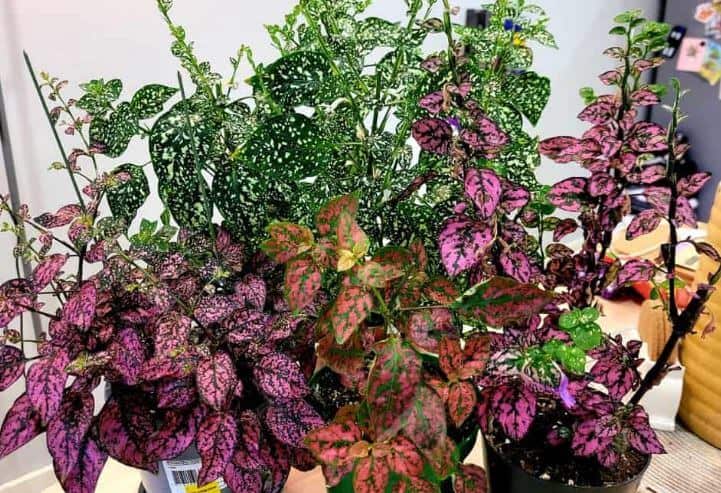
There are one hundred plus Polka Dot varieties globally. A few of these include:
- “Purpuriana” boasts purplish leaves as its name implies.
- “Camina” features a dark green bed with vivid red polka dots.
- “Wit” displays marbling on white leaves.
- “Confetti” has green foliage with burgundy, white, pink, rose, or red dots.
- “Pink Brocade” offers green foliage with mottled pink dots.
- “Splash” exhibits various greens hues splotched with red, white, or pretty pink.
Finally
The Polka Dot is a gay, happy plant in appearance that is easy to grow. It has vibrant colors and variations so no two will have the same effect. This plant looks particularly stunning when placed in the middle of a group of green-leafed plants. It also is striking when used as a trim or border in your garden. The Polka Dot plant’s unique foliage adds color and personality to your garden whether indoor or outdoor.

